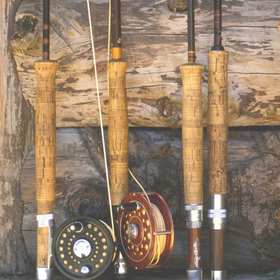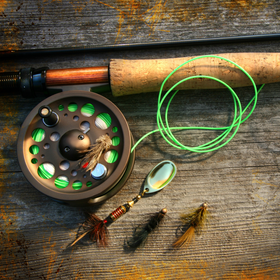The most popular steelhead fly rodding technique is the wet fly swing. This is used traditionally when steelhead are in fairly shallow water (less than seven feet) and water moving at about walking speed. To begin the technique, you cast upstream from where you are standing, you should be also be standing upstream from the designated target. Once you cast you need to mend your line immediately. And then do nothing else. The mending allows the fly to sink without hindrance. The fly then swings down in front of the desired target. When the swing is done allow the fly to dangle for a few seconds. And be alert, often this is when the strike occurs. Generally I give the same spot a few casts and then move a little and try it again.
Another technique is the dead drift. During this technique it is crucial that the fly drift without tension, and be allowed to drift freely. A strike indicator is mandatory, and a strike indicator that allows you to see whether or not your fly is floating without being impeded is the best. Some fly fisherman use macramé yarn, others use a corkie and a toothpick, both indicate whether the fly is floating as it should. Traditional indicators also work. The idea is to keep the fly directly below the indicator, than free floating has been achieved. Dead drifting is used primarily in pools or slower riffles. Dead drifting does not cover as much water as the wet swing, but when fishing in smaller streams, or a narrow concentration of where steelhead are lying it is a very precise and effective method. The indicator can be adjusted to vary the depth at which your fly is presented.
One last popular method is bottom bouncing. Bottom bouncing works well in faster water, when steelhead are lying on the bottom. It is, as the name describes, bouncing your presentation along the bottom. Cast your fly upstream and allow it to sink to the bottom. Generally a couple of split shots BB sized placed twelve to eighteen inches above the fly, will get the fly down. But sometimes more weight is needed. Once the bottom is hit, lift the fly line out of the water by lifting your rod tip up, keep excess line in your free hand. As the fly moves downstream away from you gradually lower the line and let more fly line out.
All the above methods work with nymphs, streamers or egg patterns. More on fly selection will be presented in upcoming articles.




